MCN's expert guide on removing bug splats, tar or any other stubborn stains from your motorcycle
Summer in the UK brings with it lots of positives for bikers. Bright mornings, long evenings, warm sunshine and sticky tarmac are all positives but the downside is that your fairing, headlamp and screen will look ‘furry’ with a thousand-and-one bug splats after a ride.
Related pages
- Best motorcycle cleaning products
- Best deals on cleaning kit updated weekly
- How to deep clean your bike’s wheels
And if you park up in the sun for even a short time they get baked in place and become incredibly difficult to clean off.
But don’t scrub at them willy-nilly. Blasted-on insects, as well as sticky road tar, all need a bit of extra knowhow to shift effectively.
Once cold, give your bike a soaking
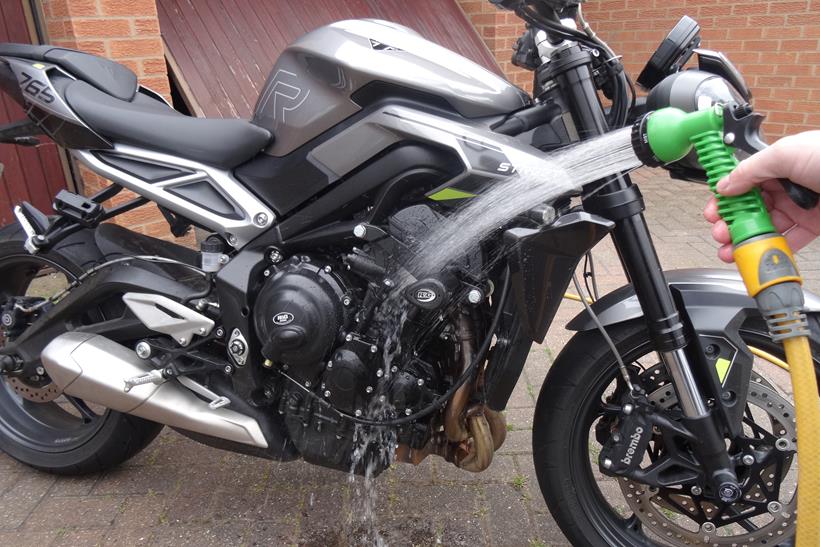
Let the bike cool because any residual heat will quickly vaporise the water and cleaning compounds, leaving behind a tarnished residue. Place the bike on stands so both wheels are off the ground. Pre-rinse with water using a hose – direct the spray at any large clumps of dirt so it loosens and blasts it off. Thoroughly wet the bike so it is completely soaked.
Bruce’s tip: It’s best to do this job first thing, or late in the evening when it’s cooler.
Let the bubbles do their thing
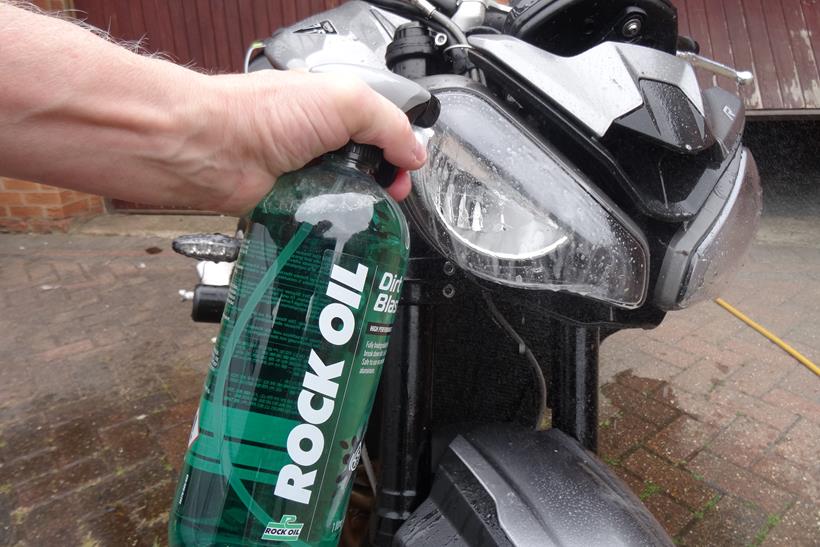
Make sure you use a motorcycle-specific cleaner, and take care not to confuse a cleaning product with a degreaser. Spray the cleaner onto the bike’s already wet panels – as the solution hits the surface it immediately gets to work as it reacts with the water. It’s important that you leave the cleaner to dwell for two or three minutes.
Soft brush, don’t scrub

Work the cleaner into the forward facing chassis parts and engine with a soft brush – don’t scrub aggressively as this will cause scratching. The compound will loosen the dirt and squashed bugs. For really stubborn baked-on insects or road tar, clean as best you can with standard cleaner then come back to them later for individual spot cleaning.
Soak a cloth
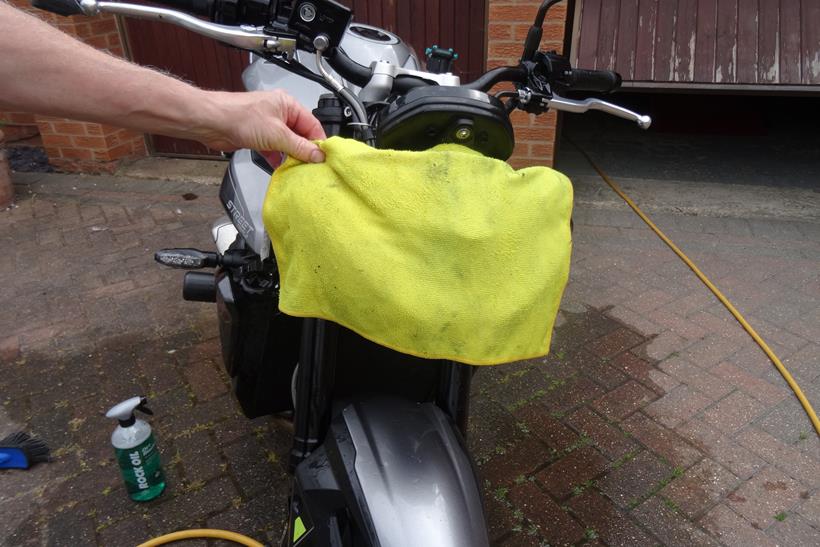
If your bike’s been bug-encrusted for some time it may need extra soaking; don’t be tempted to scrub. Drench a microfibre cloth with cleaning solution mixed with water then drape over the offending area and leave for as long as possible (without letting it dry out).
- Bruce’s tip: This is also a good technique for headlamps and mirrors, too.
Rinse and flush
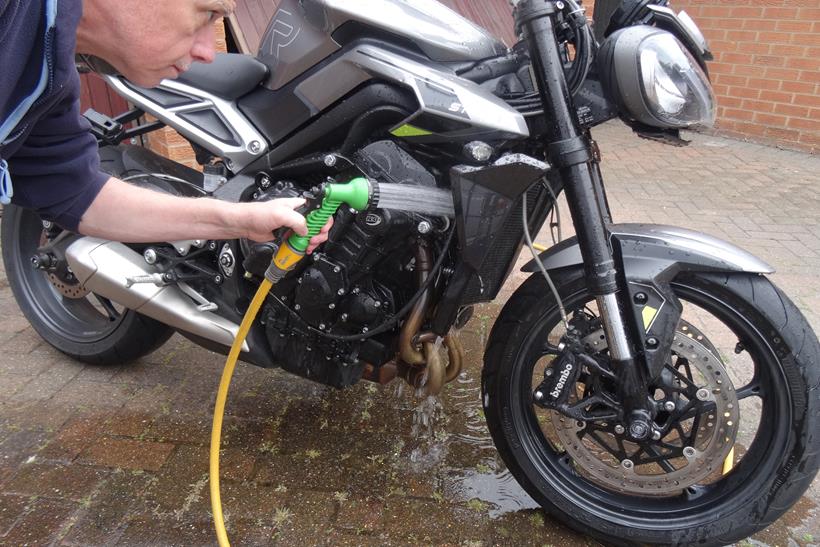
Rinse the bike with a pressure washer or hose; the idea is to wash away all those insect corpses as well as any product. Back-flush the radiator with a hose, so debris is washed out. Run your fingers over the surface; if it feels even slightly slimy there is still product left on.
- Bruce’s tip: Don’t use a pressure washer on your bike’s radiator.
Tackling tar…
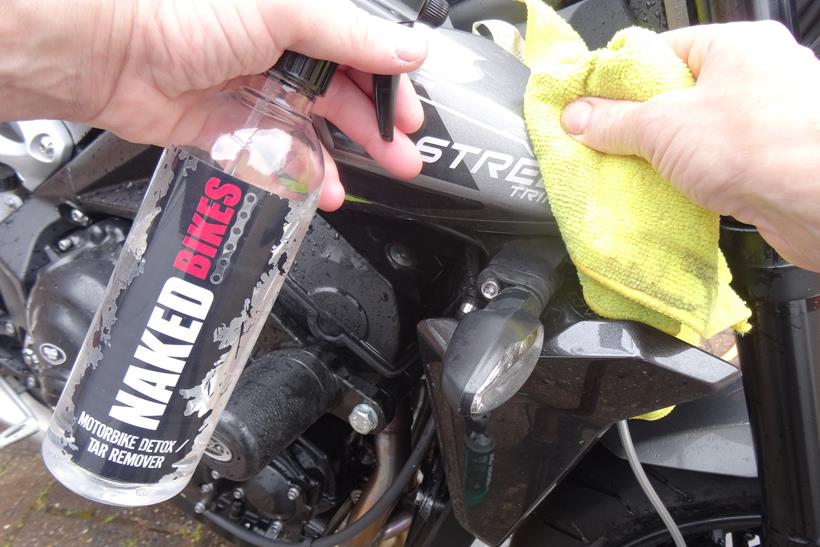
Melted tar flung up from the road can weld itself onto panels. Invest in a dedicated tar removing solution as it will contain compounds better suited for melting tarry smudges. It’s critical to follow the product instructions and only use to spot clean small areas.
Bruce’s tip: AutoGlym make an excellent tar removal product and a dedicated insect remover.
Time to make a Pledge!
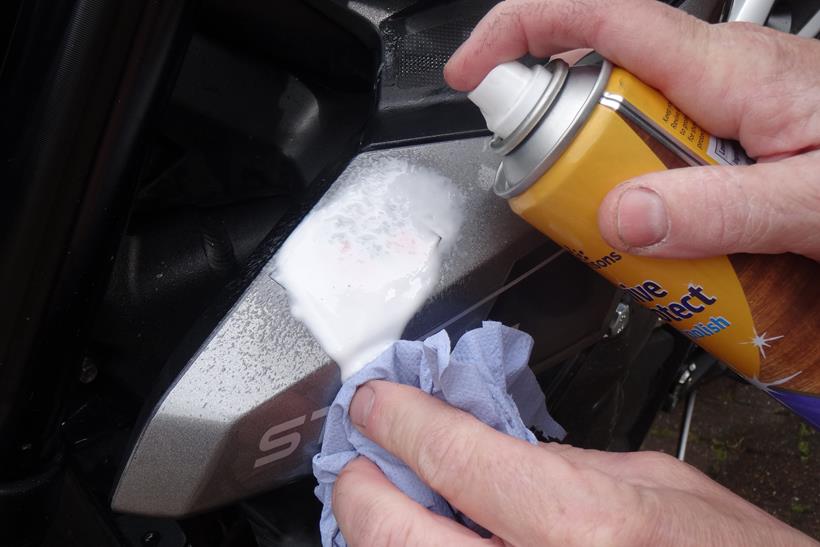
If you’ve done a trackday you’ll have at a noise test and group/session sticker plastered onto your screen. Some are difficult to peel off, so try soaking them in furniture polish. Spray on and let the foam dwell for ten minutes and you’ll find the stickers just ease off.
- Bruce’s tip: I’m not saying it has to be Pledge; any furniture polish will do the trick too!
Spot clean flung lube
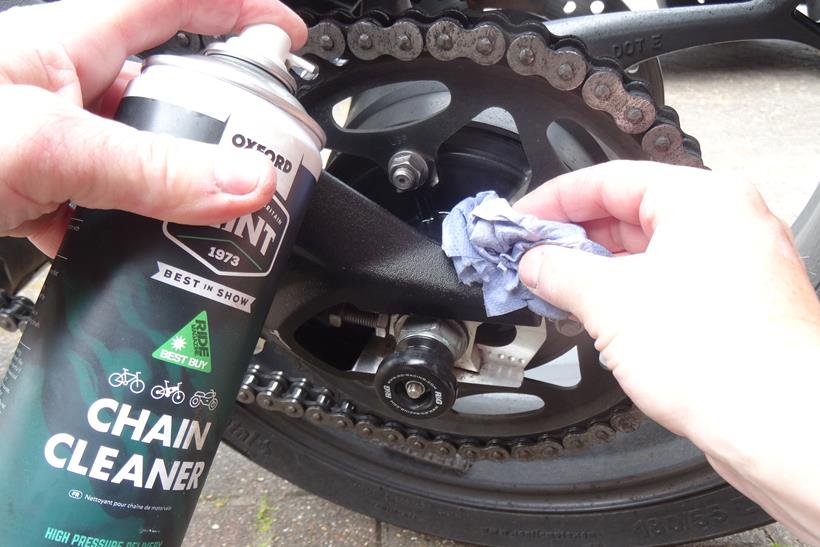
Check around the back wheel and side panels for chain lube that has flung off and stuck. There are several dedicated cleaners to do this specific job. Oxford Mint is an MCN favourite because it’s strong, but well priced (£8.99). Use sparingly and only on chain lube.
Dry, and enjoy being bug free
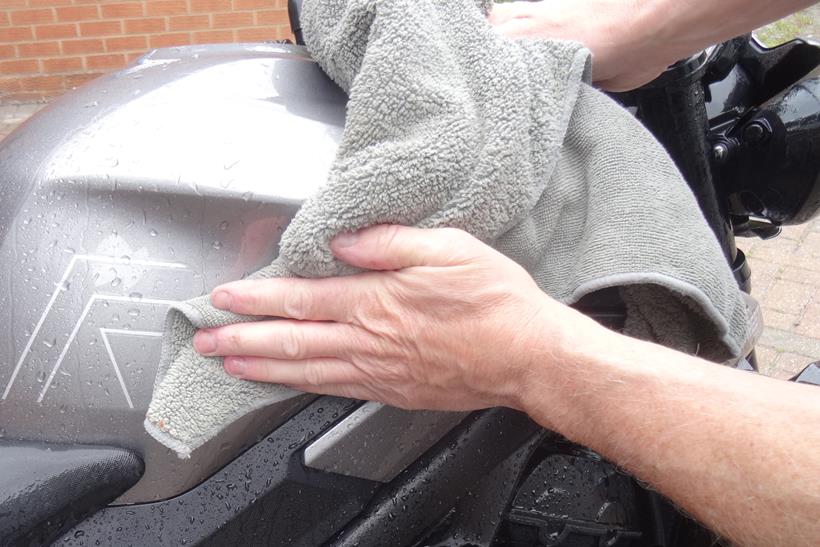
Finally, dry the bike with a quality drying cloth. Start from the top and work down. Turn the cloth as you go and wring out as necessary. Make sure there are no hidden pools of water, for example under the fuel filler cap or behind the header pipes on the crankcases.
- Bruce’s tip: An airline or Bruhl dryer is good for blasting water out of crevices.
Mind that touchscreen!
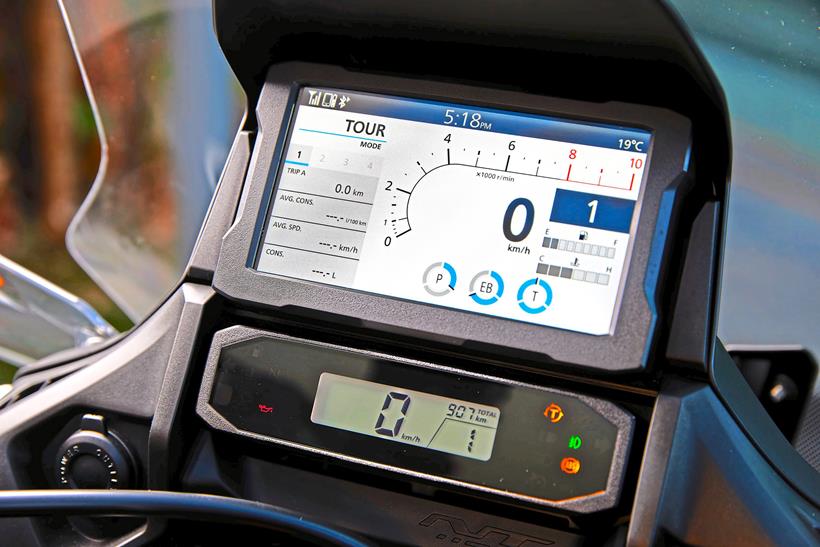
After cleaning loads of us love to liberally spray on ‘protective’ or ‘finishing’ sprays because they promise to make our bikes easier to clean next time around. That’s fine but you need to take care to fully read the instructions for these products, especially if you have a touchscreen dash.
When I was at one of the UK importer’s press workshops recently the technician there told me they’d had a long-term test bike returned which had done quite a few miles through all weathers, including winter.
They were very impressed by the condition of the bike, as the journalist had diligently detailed every last part until it was showroom ready. Unfortunately, however, the technician also said they that had to replace the entire TFT dash, which had stopped responding to any touchscreen inputs.
The only reason for the failure they could assume was that a finishing spray had been sprayed on the surface. No matter what they tried, they couldn’t get the touchscreen clean again and it refused all efforts to get it back up and running so had to be junked and replaced.
